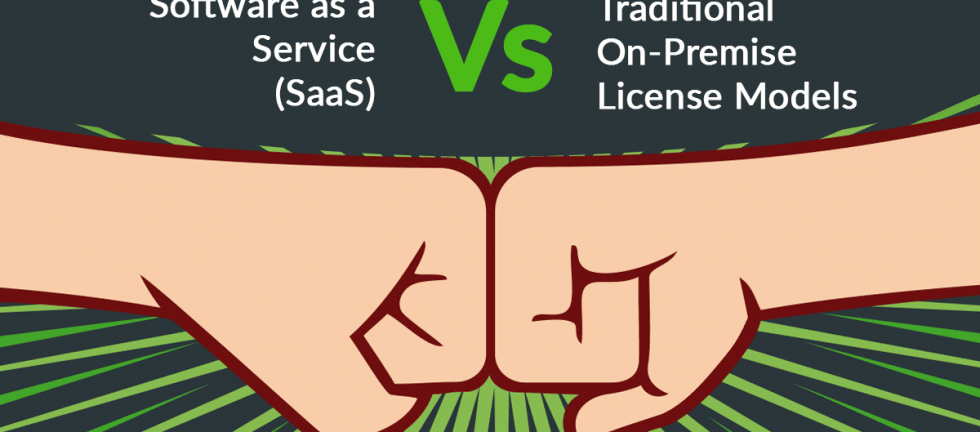Written by Frank Schroeder
In the last years the License and Delivery Model for Software and Web Applications has changed dramatically. Let’s review the most commonly found types of license.
- Perpetual License, it is a non-expiring license, support and upgrade service can be bought separately. It comes as a User license (Named User). Concurrent users means different users at different times.
- Subscription License, this is an expiring, renewable license usually annual. It includes the software, support and upgrades during the subscription time-period.
- Consumptive License, this license has a periodic fee which is based on the usage of the software .
These 3 models are more less the most used basic license models we have seen in the last decades. Although there can be found a lot of different flavors and distinctions in the industry, such as: Feature based Licensing, Account based Licensing, Network Licensing, Hardware Licensing…
In the past years, licensing has moved more and more from a perpetual, user-based model to a subscription model. All major vendors like Microsoft, Oracle, IBM, SAP…offer both to their customers.
All this license Models are aligned with different license Agreements which regulate the details of the usage of the license, copyrights, warranties and liabilities and details on terms conditions.
How has the Software delivery models changed over the last years?
In the 1990 ́s and even in the 2000 ́s state-of-the-art delivery model for software was “On-Premise”: the vendor delivered the software for download, on a CD/DVD, to install it at the computers/desktops or Servers at the client’s premise.
With the rise of the Cloud computing, additional options for delivery are getting more and more popular.
- Hosted, in this case the vendor or a 3rd party company allows the clients to run the software on their server/data centers. The software is owned by the client but the client has to pay a fee (monthly) to run the server and different services (backups, security, maintenance)
- Public Cloud, service provider like Amazon, Microsoft or IBM make cloud computing services available to the public (storage, applications, virtual machines…) via the internet in a multi-tenant architecture.
- Private Cloud, companies using cloud computing model within their enterprise proprietary architecture and in their own data center, with direct control on cloud infrastructure and On-Premise hardware.
- Hybrid, this is an orchestrated cloud-computing model which mixes on-premise private cloud and 3rd party public cloud.
With the Cloud Computing and the new options for application delivery, software as a service (SaaS) came hand in Hand.
Wikipedia defines “Software as a service (SaaS /sæs/[1]) as a software licensing and delivery model in which software is licensed on a subscription basis and is centrally hosted. It is sometimes referred to as “on-demand software”, and was formerly referred to as “software plus services” by Microsoft.[2] SaaS is typically accessed by users using a thin client, e.g. via a web browser. SaaS has become a common delivery model for many business applications.“
The term SaaS is part of the Cloud computing along with topics like Infrastructure as a Service (IaaS), Platform as a Service (PaaS).
Gartner is projecting a growth of 17,3% of public cloud services up to $206,2 billion in 2019 (https://www.gartner.com/en/newsroom/press-releases/2018-09-12-gartner-forecasts-worldwide-public-cloud-revenue-to-grow-17-percent-in-2019
Software as a Service – a game changer, see article from 21 Sep 2016 by Michael Lazar
Why considering SaaS and what are the Advantages and Disadvantages?
Why is Software as a Service (SaaS) so successful in the last couple of years and topics and what are the issues to consider?
Cloud Computing, combined with SaaS, allows for a central hosting in the cloud, easy access via browser and licensing on a subscription basis, monthly or annually.
Advantages of SaaS
- Lower up-front cost, subscription based licensing vs. perpetual licensing has no upfront cost plus no investments into IT infrastructure and maintenance.
- Quick set-up and deployment, Cloud computing allows for much faster global roll-outs than traditional lengthy software deployments on different global servers.
- Easy upgrades, is all covered by the SaaS provider easy and central and no on the responsibility at the client side.
- Accessibility & Scalability, access to the application anywhere in the world, via internet and browser. Subscription options can be changed flexibly when it is needed; e.g. when the business is growing.
Disadvantage of SaaS
- Lack of control, in-house software provides a higher degree of control than 3rd party cloud computing, where everybody has to use the latest version and cannot defer upgrades and changes.
- Security and Data concerns, in cloud computing, access management, data privacy and sensitive information requirements need to be considered and evaluated.
- Connectivity & Performance, reliability of internet services are key for the access of data and applications as well as performance compared to on-premise set-ups. In cases where you have a poor internet access, your access to the application will also be compromised.
Conclusion
No doubt Cloud Computing and SaaS are a game changer in the licensing and delivery of software and web applications.
Nevertheless, companies need to consider how important it is for them to keep control over security and the data when deciding for one option or the other.
Maybe hybrid set-ups with cloud computing and on-premise can help here. Don ́t forget that internet performance and reliability can still be an issue in global set-ups.
When considering buying from software vendors, It could be wise to insure that the offer supports, beside SaaS model, also an on-premise model, to keep control while gaining flexibility.
Empower users now!
At Newired we deliver 100% no-code
tools which allow the delivery of quick usability fixes, speed up onboarding on any web application and put users first.


